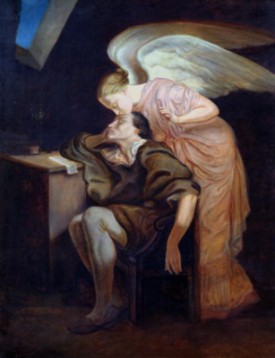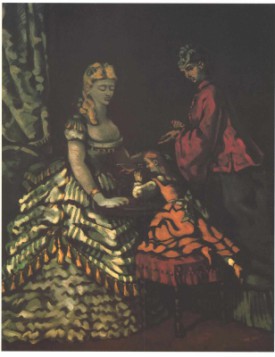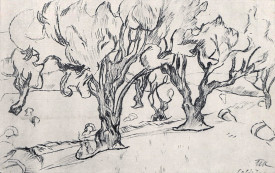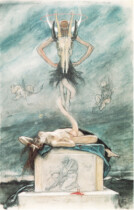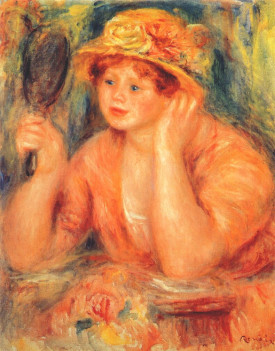Large Bathers
In his final years, Paul Cézanne painted three large canvases of female nudes in a natural landscape. The largest and the last of these is Large Bathers (1900-1906) at the Philadelphia Museum of Art, a monumental painting that presents a harmonious scene of calm and serenity. It represents the culmination of the artist’s lifelong exploration of the traditional theme of nudes in nature. The unfinished state of the painting is also important, as it creates a sense of spatial openness in the composition.
In conceiving Large Bathers Cézanne drew upon historical precedents in art and his imagination rather than natural observation. He also relied on photographic sources, partly because these did not present him the same challenges as live models: photographs never grew tired or restless, and many scholars have noted that throughout his life Cézanne struggled in the presence of women and had a fear of female sexuality. He owned the book Le Nu au Louvre (The Nude in the Louvre) by Armand Silvestre, that contained photographs of nudes from Hellenistic to modern times. These were an important source for the painter, who was especially interested in the photographs of sculpture. He also saw many of these works and had sketched them during his visits to the Louvre. In Large Bathers, for instance, the pose of the second figure was likely modeled after several sculptures: the crouched pose is reminiscent of the antique sculpture Vénus de Vienne and the extended arm could have been modeled after James Pradier’s La Toilette d'Atalante (1850).
Another characteristic of Cézanne’s canvases of female bathers is the triangular composition. This is evident in the composition of Large Bathers, which consists of two triangular groups of bathers. The groups are surrounded by trees and foliage, that create a pyramidal composition. Cézanne used a pyramidal composition in multiple figure-groups he painted in the late 1870s and 1880s: Bathers Outside a Tent (c. 1883-1885) and Five Bathers (1885-1887). The triangular composition was not unique to Cézanne, it was used by other 19th century French painters, like Pierre Renoir in The Large Bathers (1884-1887).
At the same time, Large Bathers does not conform to the standard conventions of representing nudes in a landscape. Cézanne’s nude depictions lack the sensuality and eroticism typical of the theme. The painting demonstrates Cézanne’s modern treatment of a traditional theme, particularly his treatment of the human figure: he paints the nude female bodies in the same way he paints the landscape. Cézanne’s bathers are coarse and inelegant, their limbs are inexplicably melded into one another. Scholars have interpreted this in different ways: some emphasized how Large Bathers represent a new mode of painting, that highlights the purity of form and color rather than anatomical accuracy. Others argue that the de-eroticized nudes reflect Cézanne’s anxieties about women. Large Bathers holds a significant place in art history, in its innovation and originality it influenced a future generation of artists. It was an important precedent for Pablo Picasso’s Les Demoiselles d'Avignon (1907) and Henri Matisse’s Bathers by a River (1909-1916).


